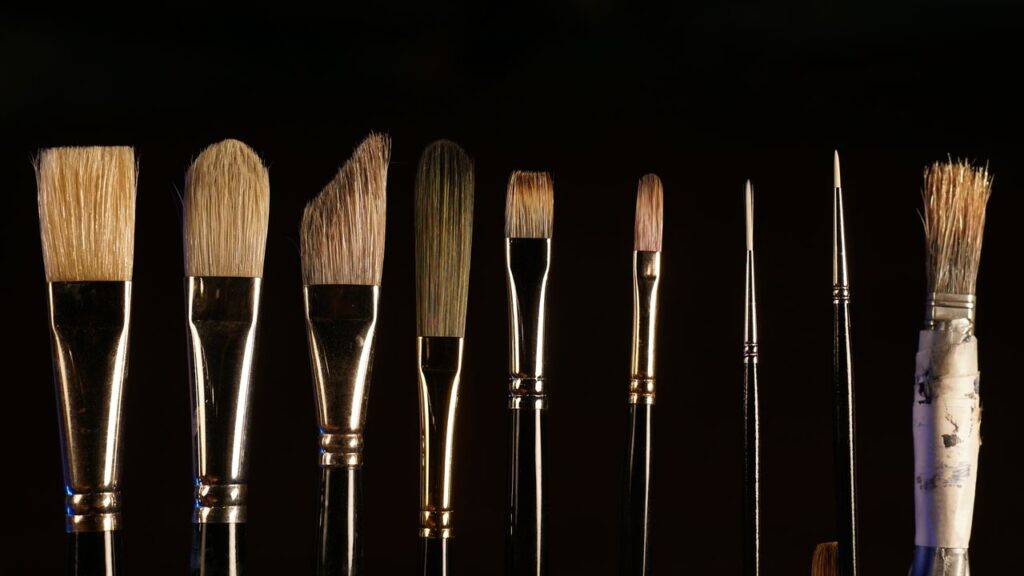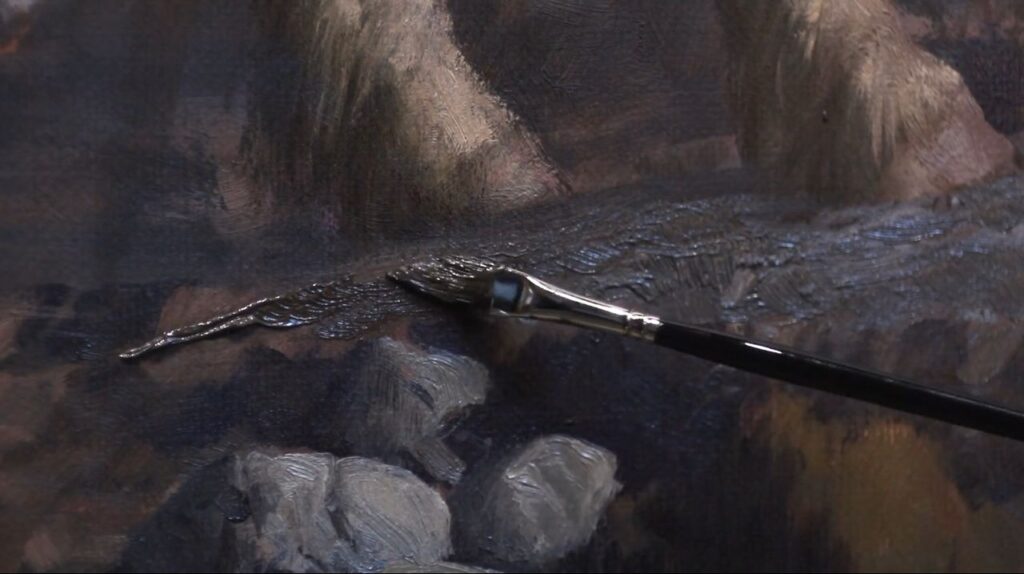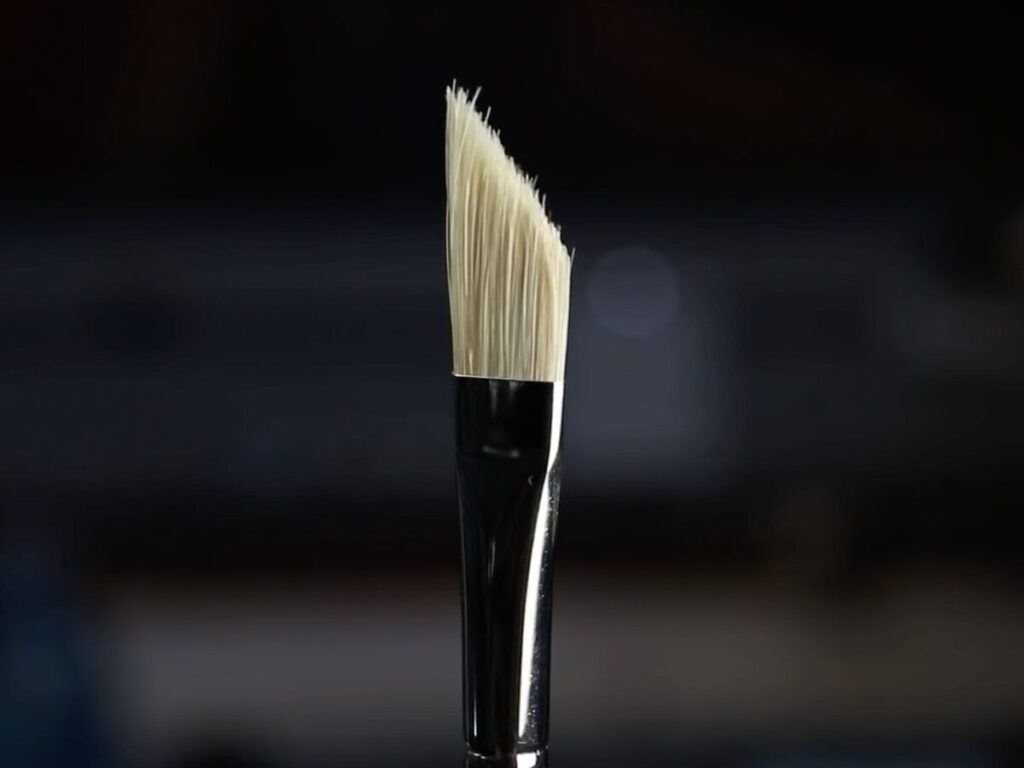- •

When I first started oil painting, choosing brushes felt like guessing in the dark. There were so many options—flats, filberts, daggers, bristles, synthetics—and I had no idea what they all did. After years of experimenting, I’ve simplified my selection down to just a few essential brushes. Here’s what I’ve learned to help you start strong.
1. The Essential Brush Shapes
These four shapes handle nearly every painting I create:
Flat Brushes: Straight, squared-off tips ideal for bold strokes, sharp edges, and quickly covering large areas.
Filbert Brushes: Rounded edges allow versatile strokes—great for blocking in, blending smoothly, and softer edges.
Dagger Brushes: Angled shape offers exceptional versatility, moving from broad strokes to precise, thin lines in a single motion. Perfect for grass, branches, and expressive lines.
Rigger Brushes: Thin brushes with extra-long bristles designed for delicate, continuous lines—ideal for branches, hair, or fine details.

2. Understanding Bristle vs. Synthetic Fibers
Brush fibers matter greatly in oil painting:
Hog Bristle: These stiff, durable brushes hold lots of paint, excellent for bold, thick, textured strokes. They’re my go-to for initial block-ins and expressive brushwork.
Synthetic (Ivory & Eclipse by Rosemary & Co.): More flexible and precise, synthetic brushes maintain their sharpness beautifully, making them perfect for detail work, smooth blends, and thinner applications of paint.
Combining both fiber types—bristle for thick highlights and synthetic for detail—adds depth and character to my paintings.

3. Match Your Brush to Your Painting Stage
I typically break painting down into three stages, using different brushes for each:
Block-In Stage: Large bristle flats and filberts rapidly lay down broad shapes.
Modeling & Refining: Mid-sized filberts (synthetic or bristle) help refine forms and add gentle blending.
Detail & Finishing Touches: Small synthetic daggers and riggers bring crisp lines, delicate details, and final highlights to life.
This progression keeps my paintings structured, from loose beginnings to precise finishes.
4. Invest in Quality Brushes
Cheap brushes can shed, lose shape, and quickly frustrate your painting sessions. Quality matters.
I’ve found consistent success with Rosemary & Co. brushes. Their handmade bristle brushes stay resilient, and their Ivory and Eclipse synthetics maintain their shape even after heavy use. Rosemary & Co. also offers an “Andrew Tischler” brush set that perfectly captures my essential toolkit—ideal for beginners looking for reliable quality.
Want to know a fun test? Try mixing purple from different reds and blues. You’ll really notice the difference if you’re using muddier multi-pigment tubes.


5. Simple Brush Care Tips
Taking care of brushes doesn’t need to be complicated:
Wipe away excess paint after each session.
Gently clean brushes with mild soap or dedicated brush cleaner (avoid harsh solvents).
Reshape and store brushes upright or flat to preserve their form.
Caring for your brushes extends their life dramatically.
Ready to Paint?
Armed with these essential brushes, you’re set to tackle almost any painting subject confidently. Remember, it’s not about having every brush out there—it’s about understanding what each one can do and using them effectively.
If you’d like to dive deeper and see these brushes in action, check out my Oil Painting Fundamentals course at Tisch Academy.
👉 Check out the Oil Painting Fundimentals course on Tisch Academy
Happy painting!
Tisch
Never Miss a Post!
Keep up to date with videos, livestreams, blog posts, print drops and much more!

